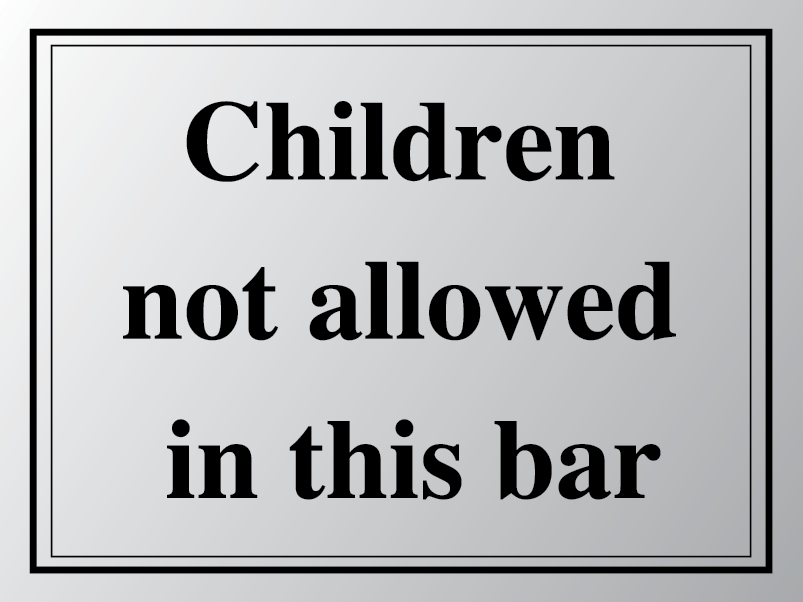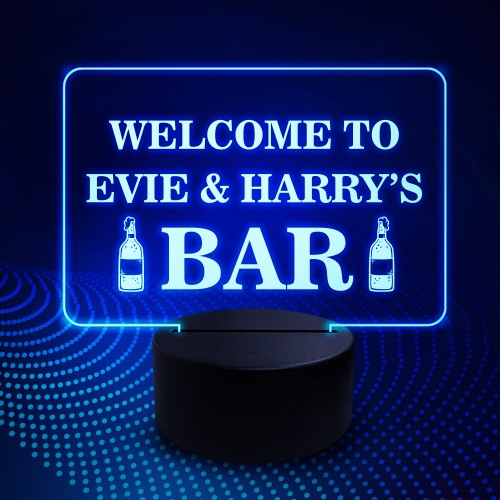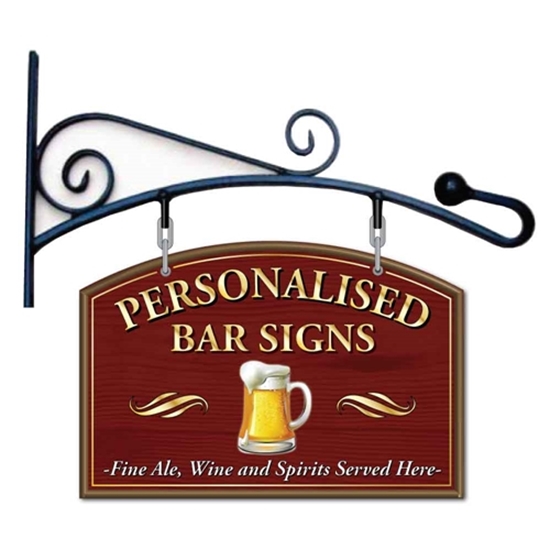Great Info To Deciding On Pub Signs
Wiki Article
What Is The Difference Between Bar Signs? Differ?
Bar signs vary significantly in regards to location, and also their style, function and positioning are designed to ensure the effectiveness of specific regions. The place of the bar signs will affect their design. Exterior Signs
The purpose is to establish the bar and attract customers.
Features: Big, eye at-tractive and frequently illuminated to improve the visibility at night.
Materials: Strong, weather-proof materials like neon or vinyl.
Signs above the entrance: Name of bar and logo, marquee and so on.
2. Entrance Signs
Goal: To greet patrons and provide initial details.
Features: Crisp and inviting, usually with branding elements.
Materials: Wood, Metal or illuminated signs.
The signs include "Welcome", operational hours and other announcements.
3. Interior Wall Signs
The purpose of this is to enhance the decor, give information and create ambiance.
Features: Available in different sizes and styles, so that they complement any interior design.
Materials: Wood, metal, chalkboard, acrylic.
Examples are menu boards, décor signage and inspirational quotes.
4. Signs for Behind-the-Bar
Highlight important information such as the bar's name, its signature drink, or specials.
Features The focal point is well-defined and well-lit.
Materials Displays: Digital, neon, chalkboards, or LED displays.
Examples include bar name signs and drink specials boards.
5. Signs for the ceiling and hanging
Use: For information on direction or to enhance the decoration.
Features: Suspended from the ceiling. It is visible from all angles.
Materials: Lightweight materials such as foamboard, acrylic or metal.
For example: hanging decorative signs and themed props.
6. Tabletop Signs
The purpose is to inform patrons of specific information on their table.
Features The font is small and easy to read from close up.
Materials The paper is made from wood.
Examples include drink menus and table numbers. Promotional cards, QR codes, and stands for promotions.
7. Restroom Signs
Purpose: To clearly show the toilet's location.
Features: Usually with big, clear symbols or text.
Materials: Metal, plastic, wood.
Examples: Men's and female bathroom signs, restrooms that are unisex signs.
8. Directional Signs
Guide patrons through various areas of the bar.
Highlights: Clear labels and arrows, easy to read.
Materials: Metal, acrylic, wood.
Signs that point to the restrooms, exits, and other seating areas are examples.
9. Window Signs
The purpose is to draw the attention of passersby, and to provide information on the bar.
The features are often visible from outside and include lighting.
Materials: Vinyl decals, neon, LED.
Examples: promotional signs such as hours of operation, and event announcements.
10. Signs for events and promotions
Purpose: To inform patrons of special events or promotions, as well as seasonal offers.
Features: Usually temporary However, they are often attractive.
Materials: Vinyl, foam board and chalkboard.
Examples of banners and posters for events.
Local Specific Factors
Visibility
Signs for Entrance and Exterior: They must be easily visible from a distance in order to attract customers.
Signs for the bar's interior and behind-the-bar should be placed strategically for maximum impact and readability.
Durability
Exterior Signs: Use weatherproof materials that can endure the elements of outdoor.
Interior Signs can use different materials because they are not exposed to elements.
Aesthetic Inclusion
Affixing signs to the bar and behind the bar: These should be in line with the theme of your bar and the interior design.
Signs for directions and informational displays must be both practical and fit in with the decor.
Functionality
Signs for directions and restrooms: These signs must be easily read and clearly displayed to ensure that customers are able to find their way around the location.
Signs for events and promotions are able to be modified or temporarily displayed in order to reflect the latest options.
Lighting
Window and Exterior signs are usually lit so that they are visible at night.
Interior as well as Behind the Bar Signs Utilize lighting to create ambiance or highlight specific areas.
By tailoring the materials and design of bar signs in accordance with the place of the sign owners of bars will be able to enhance the appearance and function of their establishments. This creates an inviting and cohesive environment for patrons. Follow the best advice for man cave signs for site recommendations including pub wall sign, garden bar signs, pub signs for garden bar, personalised signs for home bar, pub signs made, personalised hanging bar sign, hanging bar sign, bar sign hanging, pub bar signs for sale, large pub sign and more.

What Is The Difference Between Installing And Mounting Bar Signs?
There are different ways to mount and install bar signs, based on their weight, size and location. Here is a look at how to install and mount bar signs. Wall-Mounted signs
The main characteristics are that it is fixed directly to walls.
Methods:
Anchors and Screws: Usually used on heavier signs (metal and wood) to ensure stability.
Adhesive Tape can be applied to signs with a lighter weight, such as foam board or acrylic.
Brackets can be used to display signage that extends beyond the wall.
Uses: Indoor decor, menu boards, directional signs.
Benefits: Safe and flexible display.
The negatives of this product are: It can damage the walls and is hard to install.
2. Hanging Signs
Suspended from ceilings and overhangs.
Methods:
Chains - strong, adjustable and ideal for heavy signage.
Cables: A more sleek appearance that is often employed in contemporary designs.
Rods: Provide a rigid support structure.
Uses: Ceiling decor, directional signs, overhead promotional signs.
Benefits: Increased visibility, uses vertical space and can be decorative.
Negatives
3. Signs for Freestanding Places
Specifications: Not fixed to any structure and supported by a base or support.
Methods:
A-Frames: Portable and foldable frequently used to promote sidewalk advertisements.
Pedestal Stands: Stable base, ideal for indoor use.
Post and Panel: Common for larger permanent signs.
Uses: Outdoor advertising, indoor directional signs, promotional displays.
Specifications: The product is portable, versatile and easy to set up.
Disadvantages: Can be bulky and requires the use of floor space.
4. Window Signs
Features: Directly connected to windows.
Methods:
Suction cups are easy to install, remove and use for smaller signs.
Adhesive Glass: It can be directly applied to the glass's surface. It is ideal for graphics, decals as well as other graphics.
Static Clings: They're permanent but not permanent. They are reusable and they are easy to install or remove.
Applications: Promotional messages, and branding.
Benefits: Increases the space inside the window, and it is very visible from the outside.
Disadvantages include: limited size windows, sunlight can influence performance.
5. Backlit and Edge-Lit Signs
The sign's characteristics include lighting inside the structure of the sign.
Methods:
Wall Mounting With Electrical Connections. Requires electrical connection and an appropriate attachment.
Suspended with Power Cables Hangs with integrated lighting.
Utilizes: Branding with high-visibility menu boards as well as decorative elements.
Benefits: Better visibility, attractive lighting.
Installation is more complicated and requires electrical work.
6. Temporary and Portable Signs
Created with simple installation and removal with ease in mind.
Methods:
Pop-Up Stands are light and foldable.
Banner Stands: Roll-up or retractable designs.
It is used for promotions, events and seasonal decor.
Advantages: Easy transport and fast set-up.
Advantages : less durable and may not be stable.
7. Magnetic Signs
Specifications: Magnetic force is used for attachment.
Methods:
Magnet Strips: They are attached on the back of the sign.
Magnetic Boards (Signs): Attaches to any metal surface.
Uses: Menu boards with a changeable layout Temporary notices.
Advantages: Easy to change No permanent fixtures are required.
Disadvantages : Limited to areas with magnetic properties, not as secure.
8. Projection Signs
The main feature of light is that it's used to project images and text.
Methods:
Mounted projectors can be attached safely to ceilings or walls.
Portable Projectors can be set on stands or other surfaces.
Uses include: dynamic displays, events, and promotions.
Benefits The sign is not required, content can be easily changed.
Negatives: requires a controlled lighting environment dependent on the quality of the projector.
Considerations in Mounting and Installing
Size and Weight
Heavy Signs: Require stronger mounting solutions, such as screws and anchors.
Light Signs can be created with less complex methods, like suction cups or adhesive strips.
Durability
Permanent Signs: Choose an extra secure and long-lasting way of mounting.
Temporary Signs: Opt for methods that permit easy removal and moving.
Location
Indoor: Less concern with weather resistance, more adaptability of the materials and techniques.
Outdoor: Needs weather-resistant material and secure mounting that can withstand elements.
Aesthetics
Concealed Mounting creates a tidy appearance by hiding the entire hardware.
The attractive hardware can improve the appearance of the sign.
Accessibility
Easy Access for Changes It is crucial for signs that require regular updates, such as menu boards.
Security: Ensures signs are not easily tampered with or stolen.
Bar owners must be aware of these elements when deciding on the best mounting and placement method that meets their requirements. This will ensure their signs are visible, secure and satisfy their aesthetic and practical requirements. View the top rated hanging signs info for more tips including large bar signs, bar signs for home bar, personalised garden bar signs, the staying inn pub sign, hanging pub signs, home bar pub signs, staying inn sign, personalised pub signs for garden, gin bar sign, personalised signs for bar and more.

What Is The Difference Between Bar Signs According To The Budget?
The cost of bar signs varies widely based on various factors, including dimensions, materials, complexity and personalization in addition to installation requirements. Bar signs differ in terms of cost. Material Cost
Low-cost Materials: Signs that are made of foam board or vinyl decals and acrylic basic are less expensive.
High-Cost Materials: Signs crafted with premium materials like metal, wood, or custom-made glass may be more expensive due to the cost of materials and the quality of workmanship.
2. Design Complexity
Simple Design: Signs featuring simple designs that have minimal text and graphics and signs with a simple style, are usually priced less.
Signs with complex graphics, custom typography or special effects, like LED, neon require greater expertise and time, which adds the cost.
3. Customization
Standard Options - Pre-designed templates and signage that are available off the shelf are often cheaper than custom-designed signs.
Customized Features: Custom branding, logos, colors and even finishes can add to the cost, but provide unique branding options that are specific to the brand's image.
4. Size and Scale
Small-Scale Signs: Tabletop sign or decals wall-mounted signs are typically cost-effective due to the lesser cost of production and materials.
Large-Scale Advertising: Signs that are large in size as well as outdoor marquees and illuminated displays all require more labor and equipment. This results in more expensive cost.
5. Lighting
Non Illuminated Signs – Basic signs without any lighting components tend to be less expensive than illuminated ones due to the fact that they are made with fewer materials and require less electrical installation.
Illuminated Signs with illumination. Neon or LED signs, as well as backlit ones cost more because of the wiring, additional materials and energy used.
6. Installation
DIY Installation: Signs that can be easily installed by bar owners or staff are less expensive than signs that require professional installation.
Professional Installation: Complex or large signs might require professional installation. This can increase the overall cost, but also ensures that the sign is properly mounted and in compliance with safety standards.
7. Quantity
Large orders can qualify to receive discounts on quantity or per unit cost when compared to single orders.
Single Orders: Ordering single signs or custom pieces could be more expensive due to the manufacturing and installation costs.
8. Maintenance and long term cost
Low-Maintenance Warning Signs: Signs that need minimum maintenance and an extended lifespan could help you save money through lowering the cost of repair and maintenance.
Signs with high maintenance requirements: Signs that have intricate designs, delicate materials or specialized upkeep may have higher costs.
9. Budget Allocation
Allocated Budget: Setting a clear budget for signage enables bar owners to focus their budget on important aspects like branding as well as visibility and durability.
Cost-Benefit Assessment: Through formulating the ROI (return on investment) of various signs bar owners can make more informed decisions regarding the budget they allocate to.
10. Financing Options
In advance payment - Paying in advance is a efficient option than a loan or installment plan because it will eliminate the cost of financing and also interest.
Financing Plans: Some signage providers offer financing options or payment plans that help spread out the cost of signs over time, which makes higher-end options more accessible to bar owners who have limited upfront capital.
These factors can help bar owners choose the right signage to communicate their brand's image, improve customer's experience, and increase the efficiency of their business. Read the top cocktail bar sign info for blog info including garden bar sign personalised, personalised garden pub sign, pub signs personalised, personalised bar signs, pub signs for garden, to the bar sign, make a pub sign, gin bar sign, garden bar signs, personalised garden bar signs and more.
